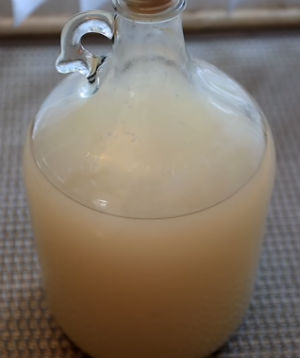Sugar wash
Jump to navigation
Jump to search
A sugar wash is a method of creating high yields of ethanol from table sugar with the fewest contaminants in the least amount of time. The ethanol produced is safe for human consumption but unpalatable until distilled. The method involves adding a yeast to sugar water and allowing the yeast to consume the sugar in an oxygen free environment. A tomato paste wash is in alternative to sugar washes.
The amount of sugar the yeast can consume limits the amount of ethanol produced. At 0°C, 1 liter of water will hold 1.75 kilograms of sugar.[1] Conversely, 1 liter of grape juice for wine making starts contains 140g of sugar and apple juice for cider making contains 120g of sugar.
Making a sugar wash
- Clean and sanitize your equipment using sodium metabisulfite
- Weigh 250g of sucrose for each liter of wash you would like to produce
- 500g of sugar makes 2 liters of wash
- Heat distilled water in a pot
- Use less water than the volume of wash that is being made as the sugar will add volume
- Distilled water will limit the contaminants introduced into the wash
- Add the measured sugar to the hot water and stir
- There should be no undissolved sugar in the water
- Remove the solution from heat and allow it to cool to room temperature
- Transfer the solution to a fermentation vessel
- Use a funnel to help transfer the solution if necessary
- Prepare a high alcohol tolerant yeast as packaging directs
- Use K1V-1116 or EC-1118 yeast strains
- Some strains will may say they tolerate 18% alcohol but usually it will only tolerate 15% or less
- Use 1 package of yeast for every 2 liters of wash
- Add the yeast into the vessel with the solution and stir
- Add more water to bring the total volume to the planned size of your wash
- Add an airlock to the vessel using the airlock's directions
- Check the vessel over the next hour to ensure gas is escaping through the air lock
- Store the vessel in a dark area that is room temperature
- The wash is complete once there is no more gas passing through the airlock
- Approximately one to two weeks
Links
- How to make Alcohol at Home (Ethanol) - YouTube
